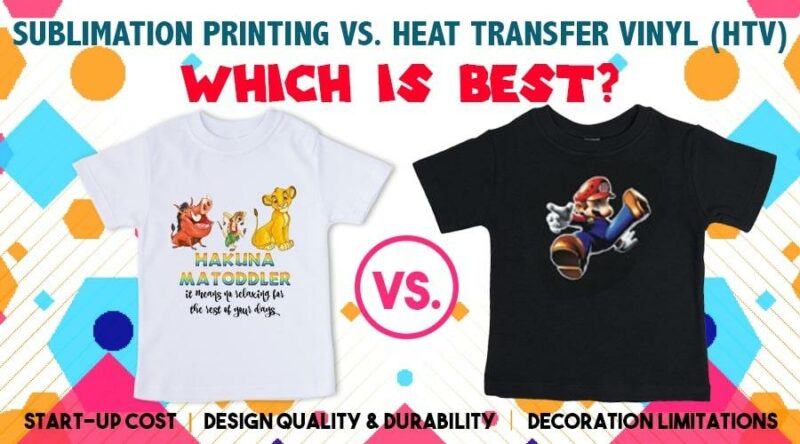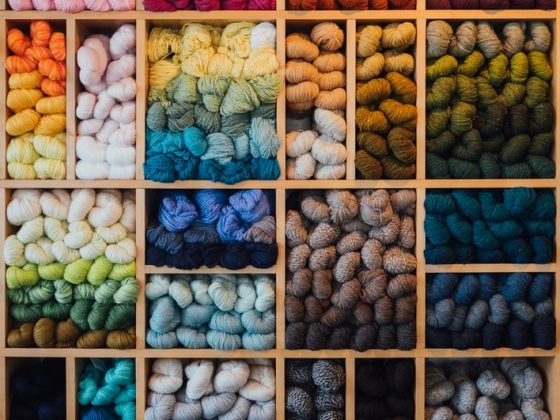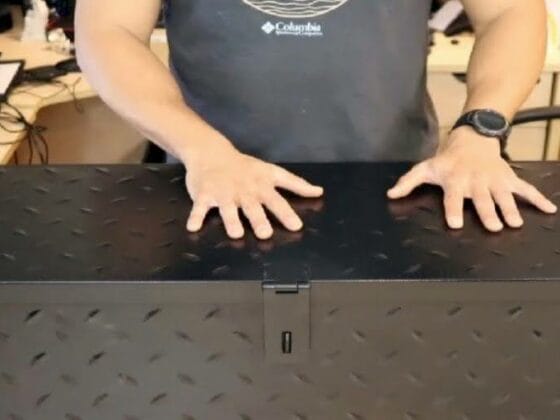Sublimation print uses sublimation inks onto specific transfer paper and then transferred to a polyester fabric or material using heat and pressure. On the other hand, vinyl printing is a form of digital printing in which an image or design is printed with solvent-based inks onto a vinyl material and then cut into the appropriate shape.
Heat transfer vinyl and sublimation are both types of printing techniques. However, each has unique qualities. Both printing methods utilize a similar procedure, but their outcomes are distinct.
If you want a high-quality, long-lasting print, sublimation is for you. Vinyl is the best option if you have a smaller budget and are not concerned about durability. However, your decision will also be influenced by the type of material you choose to print on.
In this post, we will evaluate the advantages and disadvantages of these two printing technologies so that you can make an informed decision about which is ideal for your next project.
Table of Contents
Key Takeaways
- The key distinction between HTV and sublimation printing is how the design adheres to the fabric.
- Sublimation is typically more expensive than Vinyl.
- Vinyl is generally more versatile than sublimation.
Keep scrolling to learn more!
Sublimation Printing
Sublimation printing is a digital process in which a design is printed onto special transfer paper using sublimation inks and then transferred onto a polyester fabric or material using heat and pressure. During this process, the sublimation paper transforms from a solid to a gas. And when it cools, it becomes a permanent part of the surface.
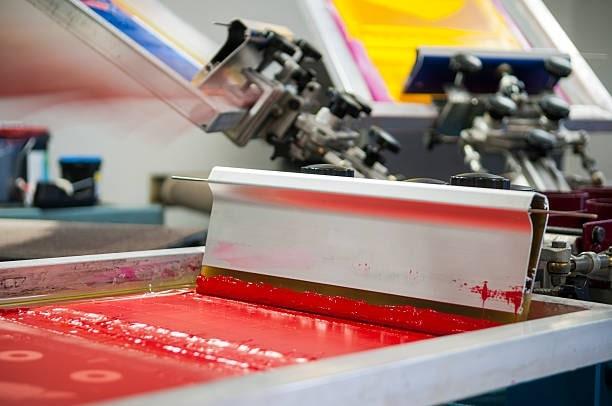
This style of decoration is ideal for transferring high-quality, colorful images onto things or products without degrading the clarity of the original image on polyester.
The process of sublimation printing involves the following steps:
- Design your pattern and print onto a sublimation paper
- Place the submission paper onto the polyester material
- Apply heat and pressure to the material; this causes the sublimation inks to turn into gas and penetrate the fibers of the material.
- When the inks cool down and solidify, they will form a permanent bond with the material’s fibers.
Related: Best Sticker Papers For Cricut – 5 Options And Buying Guide
Advantages of Sublimation Printing
- Sublimation printing produces vibrant, detailed, and high-quality prints with accurate color reproduction.
- Material compatibility: Sublimation printing can be applied to a wide range of materials, including polyester-based textiles, ceramics, metal, and more. Vinyl printing is limited to printing on flat or slightly curved surfaces.
- Durability: Sublimated prints are known for their long-lasting, fade-resistant properties, making them perfect for regularly used goods or exposure to the elements.
- Softness: Sublimated prints are blended into the cloth’s fibers, resulting in a soft and flexible print that won’t break or peel over time. Vinyl prints are typically rigid and brittle.
- Sublimation printing permits the material’s background to show through, enhancing the print’s overall beauty. Vinyl printing often requires a background color to be applied, which might limit design options.
Related: Cricut Maker Vs. Cricut Maker 3 – A Detailed Comparison
Limitations of Sublimation Printing
Some of the limitations of Sublimation Printing include the following:
- Printing is limited to white and other bright surfaces
- It costs a lot to get started.
- When you run out of ink, you will have to purchase another bottle at a high price.
Related: Sublimation vs. Screen Printing: Understanding the Process and Applications
Vinyl Printing
Vinyl printing is a digital process in which an image or design is printed onto a vinyl material using solvent-based inks and then cut into the desired shape. After the design is made, the vinyl design is put on the product (T-shirts, bags, caps, etc.) with a heat press.
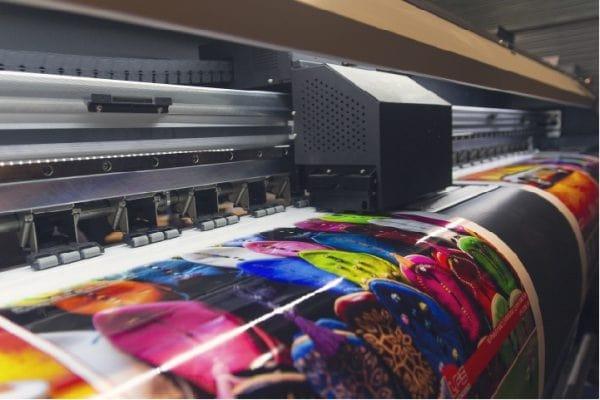
The vinyl material is very soft, but it still has a good amount of durability. Its flexibility makes it great for a wide range of uses, especially T-shirts and joggers that need to move with your body.
The process of vinyl printing involves the following steps:
- Make a Design: You start by making a design with a special kind of Vinyl. It comes in many different colors and textures.
- Cut the printed Vinyl into the shape or size you want
- Once the machine is done cutting, you can put the vinyl piece on the transfer paper to make it easier to put it on the product.
- Place the Design—Place the design anywhere on the product.
- Use a Heat Press—Finally, use a heat press to help the vinyl stick to the material.
Related: Best DTG Printer for Small Business
Advantages of Vinyl Printing
- Material compatibility: Vinyl printing can be done on a wide range of surfaces and materials, including flat or slightly curved surfaces like windows, walls, and vehicles. That’s a wide range of materials compared to those used for sublimation printing.
- Cost-effectiveness: Vinyl printing is often cheaper than sublimation printing, especially for small production runs or when making individual graphics.
- Suitable with cotton and dark textiles
- You can include white in your design.
- Lower the time and temperature options for your heat press
Limitations of Vinyl Printing
- The procedure is time-consuming, making it unsuitable for large orders or projects.
- Not long-lasting or sturdy
- After only a few uses or washings, cracks, and peels usually occur
Related: 5 Best Epson EcoTank Printers for Sublimation
Comparison of Sublimation vs. Vinyl
Now that we’ve reviewed the fundamentals of each printing method, let’s analyze the significant differences to help you make a selection.
The key distinction between vinyl and sublimation printing is how the design adheres to the fabric.
With vinyl, a coating of vinyl is attached to the surface of the cloth using heat and pressure. Sublimation involves dyeing the cloth itself so that the design becomes an integral part of the garment. This makes sublimation more resilient and durable than vinyl.
Due to this distinction, vinyl is often more suited for tougher surfaces such as wood, glass, metal, or plastic. In contrast, sublimation is optimal for natural fabrics such as cotton and polyester.

Vinyl can be applied using an iron or heat press, whereas sublimation requires a specialized printer and transfer paper in addition to a heat press.
Additionally, since vinyl only transfers the design to the surface of the cloth, there is no risk of losing any of the design while cutting it out, as there is with sublimation. Some key factors to consider between the two include the following:
- Cost
Sublimation is typically more expensive than vinyl. The cost of sublimation depends on the equipment and materials necessary for the process and the printed design’s complexity. Vinyl is less expensive and only requires a vinyl cutter and transfer paper.
However, the inferior quality of the printing and the need to replace vinyl decals more frequently may outweigh the reduced cost of vinyl.
- Quality
Generally speaking, sublimation provides higher-quality prints with more accurate color reproduction. By infusing dyes into the substrate, sublimation produces brilliant, long-lasting graphics that will not fade or peel. On the other hand, vinyl cuts or vinyl decals are applied to the surface of the substrate.
Vinyl can produce high-quality images, but they are not as precise or durable as those made by sublimation, and they may peel or fade over time. Moreover, vinyl pictures are frequently constrained by the color palette and gradients you can generate with vinyl cutouts or decals.
- Durability
Sublimation is often believed to be more robust than vinyl in terms of longevity. Sublimation is resistant to water, fading, and other environmental variables making it an excellent material for outdoor and long-term use. In contrast, Vinyl is more susceptible to fading over time and may not be as durable in hostile settings.
However, it is essential to note that the durability of sublimation relies on the substrate used and the environmental conditions to which the item is subjected. For instance, sublimation-printed polyester clothing may endure several years, whereas a sublimation-printed ceramic tile may fade or discolor after a few months of use.
- Versatility
Vinyl is generally more versatile than sublimation. You can use Vinyl on a wide range of materials, including textiles, plastic, metal, and many others, making it a good choice for various applications. Additionally, Vinyl can be cut into various shapes and sizes, allowing for a wide range of design options.
On the other hand, sublimation is limited to specific materials such as polyester and polymer-coated items, as the sublimation process requires a particular type of substrate that will accept the sublimation inks. This limits the types of items that can be printed with sublimation and the available design options.
However, it’s worth noting that sublimation can produce high-quality, permanent images on compatible materials, making it a good choice for specific applications, such as custom apparel and promotional items.
Related: Best Convection Oven for Sublimation – 4 Models For All Your Designs
Choosing the Right Printing Method for Your Business
Choosing the right printing method for your business can be difficult, especially if you are starting it. Let’s look at the factors you need to consider for an ideal printing method.
Factors to consider
Factors to consider when choosing the right printing method for your business include:
- Type of material being printed on
- Quality of image desired
- The durability of the print
- Cost of equipment and supplies
- Production time and volume needed
- Versatility and design options available
Some Printing Products you can try out for the best printing results are:
- Sublimation Printer: Epson WorkForce WF-7210
- Sublimation Inks: Epson 252 Series Inks
- Sublimation Paper: A-SUB Sublimation Paper
- Heat Press: PowerPress Industrial-Quality Digital Sublimation Heat Press
- Sublimation Blanks: KLAQQED 12pcs 3.8 inch Magnet Blanks
Ideal Products for Sublimation
In general, sublimation printing can be applied to:
- Signs – Typically, building and storefront signage are printed using the sublimation method.
- Non-bendable products, such as glass, aluminum, fiberglass, and plastic.
- Blank Rigid Products – These are mouse pads, drinkware, and cell phone cases
- Polyester – Fabrics are the most commonly sublimated materials. It consists of knitted polyester items such as flags, banners, tablecloths, and woven items like tents and tote bags.
- Home Decor – items like pillow covers, blankets, shower curtains, and even ceramic floor tiles. The prints are permanent and won’t fade or bleed over time.
Ideal Products for Vinyl Printing
Some of the products applicable for vinyl printing include:
- Customized T-Shirts – Whether for a hen do, stag does, 21st birthday, or gag present, themed customized T-shirts do not need to be durable.
- Mugs or Tumblers – Once again, mugs and tumblers made for a one-day event will not be used frequently, making Vinyl the ideal use.
- Car Decals — A high-quality vinyl sheet works well for car decals, mainly when you apply it to the windows’ interior.
- T-shirts and other garments work best with vinyl printing.
Sublimation vs Vinyl FAQs
- Does Vinyl or Sublimation Last Longer?
Sublimation is more durable than vinyl in terms of lifespan. Its resilience to water, fading, and other external factors make sublimation a good material for outdoor and long-term use.
Vinyl, on the other hand, is more vulnerable to fading with time and may not be as resilient in harsh environments. However, for Vinyl, if you apply and clean it with care, it can also last for a long time.
Which Is Cheaper, Sublimation or Vinyl?
Sublimation printing has a slightly higher initial cost than Vinyl, but based on the final results, it may be the superior choice.
What Are the Disadvantages of Sublimation Printing?
Some of the disadvantages of Sublimation Printing include the following:
- Printing is limited to white and other bright surfaces
- It costs a lot to get started.
- When you run out of ink, you will have to purchase another bottle at a high price.
Can a Cricut Do Sublimation?
Cricut Design Space is fully compatible with sublimation printing. The easiest way to use Cricut Design Space for sublimation is to upload sublimation PNG files via the upload function.
Related: Best Printer For Cricut – 5 Excellent Printers in 2023
Conclusion
Clearly, there are significant distinctions between vinyl and sublimation printing. So, which method should you utilize? It depends much on your demands and what you intend to achieve. Both printing methods have their own advantages and disadvantages, so it’s vital to consider your priorities before making a choice.
If the clothing is white or light-colored and made of 100 percent polyester, sublimation paper is the finest solution, as it is created specifically to reflect dyes straight onto substrates. However, if you’re working with cotton, wood, or dark-colored materials, heat transfer vinyl sublimation is a far superior choice and maybe your only alternative.
If affordability is your primary issue and you have a limited budget, HTV is your best option. If you want a more durable and long-lasting design, sublimation is the preferable alternative. In the end, the decision will come down to your personal preferences and budget constraints.

